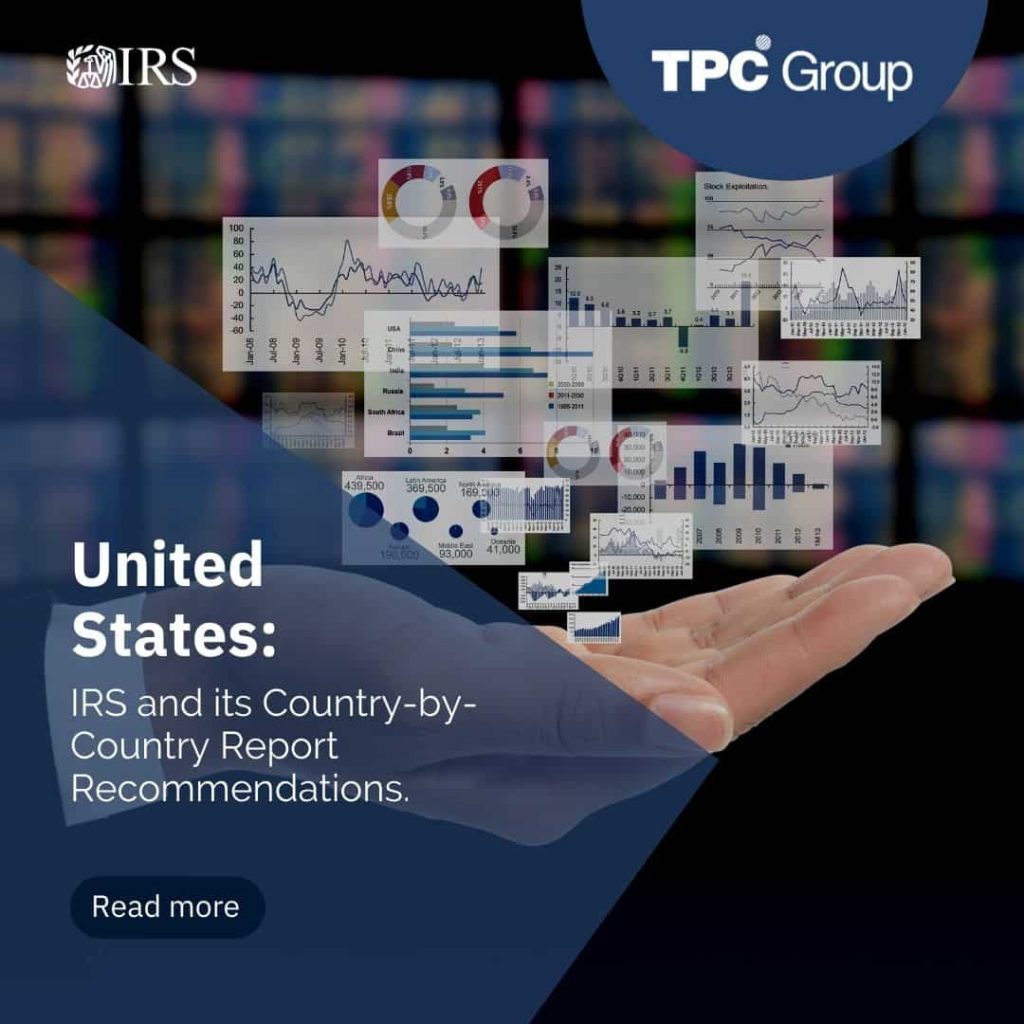The Internal Revenue Service (IRS) in the United States has issued a Circular on the Country-by-Country Report to its employees to describe the background of such report and guide the IRS personnel for those transfer pricing practices whose risk assessment processes are high.
1. Country by Country Report Background
The OECD BEPS project brought Country-by-Country Report and was subsequently incorporated into the U.S. regulations. Specifically, BEPS Action 13 introduced the three pillars of transfer pricing documentation: Master File, Local Report, and Country-by-Country Report.
Although the US did not incorporate the first two since, according to its perspective, the same information these Reports required was requested by IRC 6662 Section, it did the Country-by-Country Report in its legislation in 2016.
According to the regulations, taxpayers from parent companies of multinational groups with annual revenues of US$850 million or more must complete Form 8975, attaching “Schedules A.” These documents require further tax information related to the location of the economic activity, taxes paid and the global distribution of income.
2. Potential transfer pricing risks
According to the Circular, the Country-by-Country Report identifies potential transfer pricing risks. Before an audit, the IRS can use this report to determine whether a tax return has risk indicators. Once the audit is initiated, the IRS can use it to assess the transfer pricing risk of related party transactions.
In addition, the Circular states that IRS personnel can assess the risk factors through the Country-by-Country Report. Moreover, it contains specific information on these factors to help taxpayers perform a self-assessment.
3. Can the IRS audit the Country-by-Country Report?
No. The Circular states that the staff should not audit Country-by-Country reports or request taxpayers to adjust prices on the Return. However, the Circular can request the taxpayer to retain the information presented in such Report and orders IRS auditors to request this information when appropriate.
In addition, it reminds these auditors to consider applying penalties if there is inaccurate or erroneous information in the Country-by-Country Report, which is contradictory since the IRS cannot audit this Report.
Source: Mondaq 05/05/22



